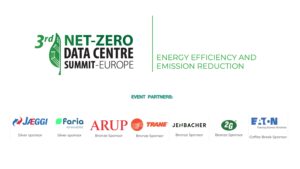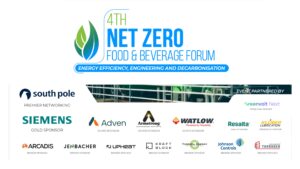Today, there is a surge in energy prices and mounting environmental concerns. So, the issues related to industrial energy conservation have become a major concern for companies everywhere around the world. Despite important technological and policy advances playing a major role, employee engagement is underestimated. It can drive much larger savings. Furthermore, Industrial settings can be transformed when employees are committed to saving energy and actively participate in energy conservation initiatives. This article breaks down the many hats of employee engagement in industrial energy conservation. It ranges from driving an energy-aware culture and implementing successful training programs to unlocking pockets of innovation across your workforce.
Employee Engagement in Industrial Energy Conservation: Fostering a Culture of Energy Awareness
Fostering a workplace culture that prioritizes energy conservation is key to achieving lasting outcomes. This part delves into how businesses can raise awareness, align energy objectives with core values, and create an atmosphere where being mindful of energy usage becomes second nature for employees.
Introducing Real-Time Energy Monitoring Systems for Employee Engagement
Real-time energy monitoring systems have the potential to enhance employee involvement in energy conservation initiatives. Furthermore, companies can offer employees instant feedback on energy consumption trends. This is by implementing meters and energy dashboards across facilities. Moreover, these systems can showcase information, on electricity usage heat loss, and equipment efficiency. So, this enables workers to witness the direct impact of their actions. For example, a production line team could see how adjusting machine settings influences energy consumption. This feedback loop encourages behaviors. It also assists employees in recognizing the tangible outcomes of their conservation efforts, within industrial environments.
Adding Energy KPIs to Performance Reviews
Key Performance Indicators (KPIs) can be included related to energy in employee performance reviews. It can help align personal objectives with the company’s energy goals. Furthermore, these KPIs could involve measurements like energy usage per production unit following energy-saving operating procedures or participating in energy conservation programs. Moreover, by integrating energy conservation as a factor in job performance evaluations, organizations emphasize its significance. They can also encourage employees to prioritize energy-efficient behaviors in their everyday tasks. Additionally, this strategy ensures that awareness is woven into the fabric of each employee’s duties instead of being viewed as an add-on or lesser priority.
Developing Cross-Functional Energy Conservation Teams
Creating teams dedicated to conserving energy across different functions can break down barriers and promote a unified approach to energy management within a company. Furthermore, these teams should consist of members from departments like production, maintenance, engineering, and management. Moreover, teams can uncover well-rounded energy-saving opportunities that they might miss when working in isolation. This is by pooling together viewpoints and skills. For instance, a team might find that aligning production schedules with peak energy demand can lead to significant cost savings on energy expenses. Additionally, holding meetings and collaborating on projects can help raise awareness about energy conservation efforts throughout various parts of the organization.
Employee Engagement in Industrial Energy Conservation: Implementing Effective Training Programs
To provide employees with the information and abilities they need to properly support energy-saving initiatives, training programs are crucial. This section explores methods for creating and implementing training programs for employee engagement. These strategies for employee engagement in energy conservation have a significant influence on employee behavior and industrial energy use.
Equipment-Specific Energy Efficiency Training for Virtual Reality
Energy efficiency training for industrial applications can be highly immersive and equipment-specific using Virtual Reality (VR) technology. Furthermore, companies can train employees to practice energy-efficient operations without interfering with actual production. This is through the creation of virtual simulations for production equipment and processes. Moreover, these are all features that allow workers to hone their skills in everything from setting parameters on equipment, recognizing when energy is being wasted, and situational training exercises. So, this is especially important for high-energy equipment. These have considerable scope to save energy from small adjustments. Additionally, VR training can be updated on the fly as new energy-saving technologies or techniques are developed and deployed. As a result, it keeps employee skills current and employee engagement at an all-time high.
Energy Efficiency Certificates for Industrial Profiles
A formalized process of educating different industrial roles about energy conservation can be established. This is by developing an internal certification for energy efficiency. It can be really helpful for employees to deepen their knowledge and skills in energy savings. Furthermore, these certifications can cover on-the-job energy management practices. It ranges from HVAC system optimization to optimal production line energy consumption. Moreover, certification in multiple stages (e.g., basic, advanced, expert) can enable a clear career roadmap for advancing energy management skills among employees. These certified employees can also become energy champions for their departments and share what they know and the best practices with them. So, this is just a great way to increase energy efficiency across the board. It is also an excellent opportunity for employees valuable on-the-job training.
Leveraging Data Analytics for Personalized Energy Conservation Insights
By utilizing data analytics, you can transform general energy conservation training into customized, useful information for teams or individual personnel. Furthermore, businesses may determine the precise areas in which each individual or team can have the biggest influence on energy saving. This is by examining data from production records, energy monitoring systems, and employee actions. For example, a system may suggest customized energy-saving measures according to a worker’s work schedule or equipment use. So, the possibility of long-lasting behavior change and quantifiable energy savings in industrial processes is increased by this data-driven approach. It guarantees that training and advice are pertinent and effective when it comes to employee engagement.
Harnessing Employee Innovation for Energy Solutions
Front-line employees are often the experts when it comes to identifying where energy can be saved within their work areas. This section investigates how organizations can benefit from this trove of creativity. This is by promoting and enabling employee-driven innovation in energy efficiency for employee engagement.
Energy Savings Idea management Platform Integration
An Energy Savings Idea Management Platform systematically captures, evaluates, and implements employee-generated energy-saving ideas. Its ideal design should enable employees to easily submit suggestions, follow their status, and work collaboratively in refining solutions. Furthermore, ideas can be classified by probable impact, execution difficulty, and necessary resources. This is to support management in ranking the most valuable changes. Moreover, the voting and commenting features can sometimes spark discussion to help iterate on ideas. This platform can support further innovation in industrial energy saving by promoting successful implementations and offering transparency into the idea’s review process.
Hosting Energy Hackathons for Quick Solutions
Energy hackathons can stimulate a rapid, vast amount of innovation around energy saving in the industry. Furthermore, these attract cross-functional teams aiming at specific energy challenges in a certain period. The participants might work on problems like reducing energy use in a specific production process, or they could be aimed at finding new methods for waste heat recovery. Moreover, these provide the resources needed to get access to data, tools, and mentors. These can lead to innovative solutions that would never surface through traditional channels. They also create a sense of community and bring out different teams in a playful way, encouraging them to save energy. Additionally, these solutions can then be further developed and deployed successfully through the hackathon process for employee engagement. As a result, it enables a substantial energy reduction.
Building an Energy Innovation Lab for a Sustainable Future
Setting up an Energy Innovation Lab will make a comprehensive long-term energy solution for industrial facilities possible. The lab would serve as a place for employees to try out new technologies, processes, and solutions in the field of energy efficiency. So, this could be anything from facilities for testing energy-efficient equipment improvements, to trialing new control systems or simulating process modifications. Businesses show a sincere commitment to energy saving by providing employees with the tools and time they need to work on energy innovation initiatives. Moreover, the lab can also work with other partners, such as startups or universities. It can help provide new insights into problems related to industrial energy. Additionally, successful lab inventions can then be expanded and applied throughout the company. This is with the possibility of producing ground-breaking gains in energy efficiency.
To Sum Up
A valuable but sometimes underutilized instrument in the fight against industrial energy waste is employee engagement. Companies can save a lot of energy and enable their employees to take an active role in sustainability initiatives by encouraging an energy-aware culture, putting in place efficient training programs, and using employee creativity. Moreover, the tactics discussed in this article offer organizations a road map for maximizing employee potential in spearheading energy-saving projects.
If you want to go deeper into ideas or insights related to energy management, make sure you attend the upcoming Industrial Energy Management Summit 2024 in Düsseldorf, Germany, on October 29–30. Experts and practitioners will convene at this event to explore innovative approaches to energy management, including the critical role of employees in it. So, explore more about the event and register right away!




